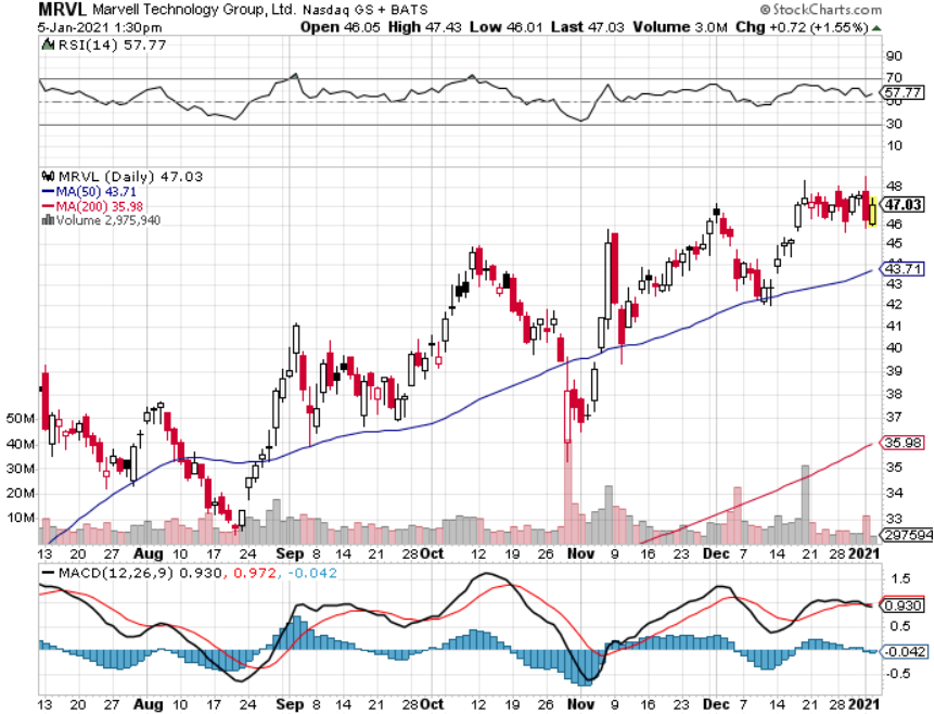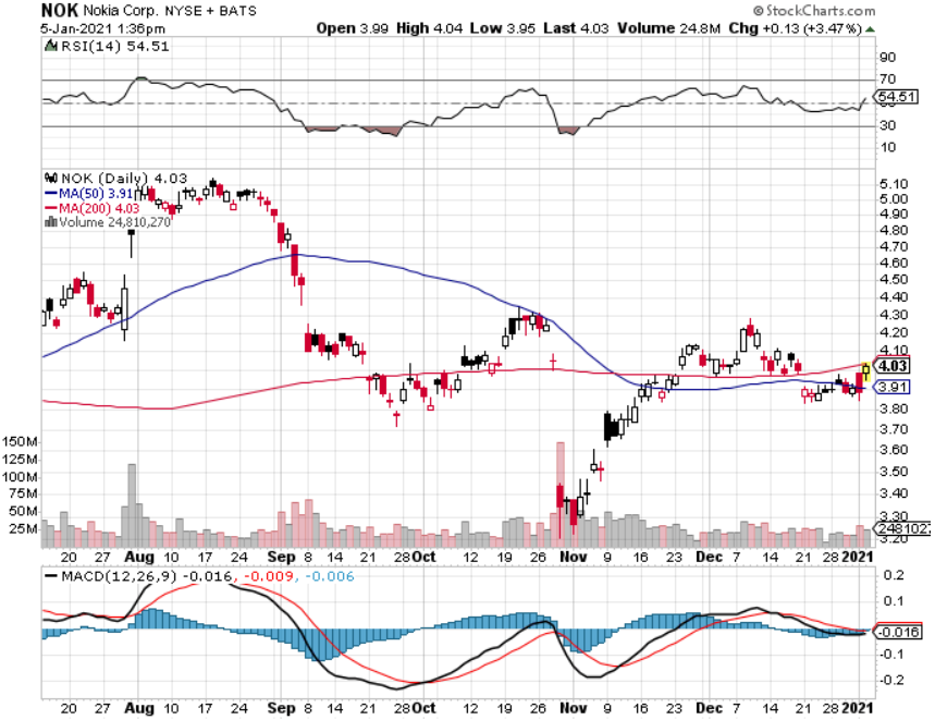It’s finally time we take a step into the future and move on from this health crisis.
One piece of technology that will help us work from home better or consume data easier on our mobile phone is 5G.
5G is here and tell your friends about it.
There are numerous ways to play this emerging trend but a sensible way to play this faster connection, lower latency, more efficient data transfer, and improved security theme is by buying Marvell Technology Group (MRVL).
This is a company that supplies base station-related infrastructure.
Let's take a closer look under the hood into why the advantage of 5G deployments in 2021 favors MRVL semiconductor firm.
This new era of technology development will be based on a massive buildout, specifically the concentration of physical infrastructure needed for the propagation of network signals.
5G boasts enhanced capabilities when compared to earlier generations of WiFi, it doesn’t even come close and consumers and corporations still have no idea what is about to be unleashed.
It also has one flaw: significantly shorter signal range.
The trade-off means a tower build-out bottleneck en route to full adoption of 5G coverage.
The infrastructure companies are cutting through that bottleneck as we speak.
Around the world, major cities are putting public 5G systems online, and new smartphone lines are 5G enabled.
And as we head into the 5G future, those companies that are fully invested in the boom will stand to gain.
Fifth-generation wireless finally came to us in 2020 despite the crushing external factors that dragged global growth down.
A third-party report estimates that 113 operators had deployed the next-generation technology in 52 commercial markets across the world by September 2020.
To add a little more color, 35 telecom operators reportedly joined the 5G bandwagon in the first half of 2020, as compared to 21 over the same period in 2019.
The deployment of 5G networks is expected to gather more steam in 2021 as many wireless frequency spectrum auctions by governments had to be delayed because of the pandemic.
As I thought correctly, the 5G base station (cell tower) market is expected to expand at a high compound annual growth rate (CAGR) of 33.7% in the future, even though its revenue more than doubled in 2020 to almost $14 billion.
The global 5G base station market could exceed $179 billion in revenue by 2028 as the service reaches more markets.
Marvell Technology supplies application-specific integrated circuits (ASICs) and embedded processors that are used in 5G base stations.
The chipmaker launched an end-to-end 5G platform at the beginning of 2019 to speed up the deployment of 5G infrastructure that was meant to replace expensive and power-hungry field-programmable gate arrays (FPGAs).
That move seems to be paying dividends, as its networking business, comprising 59% of the total revenue, has accelerated/
Marvell's networking revenue exploded by 15% year over year in the first quarter of fiscal 2021, followed by a 23% increase in the second quarter, and an even bigger ramp-up of 35% in the third quarter of last year.
The insatiable growth of MRVL's networking business in recent quarters isn't surprising, as the company is supplying its chips to the leading 5G infrastructure OEMs (original equipment manufacturers).
The Korean Chaebol Samsung (KRX: 005930) announced in March 2020 that it is making base station infrastructure based on Marvell's embedded processors. The Finnish telecom Nokia (NOK) announced in March 2020 that it is using Marvell's processors to power its 5G solutions.
Nokia and Samsung are expected to account for just over 30% of the global mobile base station market this year resulting in a massive revenue boost for MRVL.
These deals are just the tip of the iceberg with regional telecom operators looking to deploy 5G networks and select Marvell's industry-leading OCTEON Fusion-based NAND processors to power their new 5G base stations.
The hot demand for 5G base stations is what keeps MRVL afloat, but the stock has run quite ahead of itself with growing over 470% in the past 5 years and doubling over the course of the 2020 pandemic.
Any dip is an opportunity to buy the stock long term.



